The Lamborghini Silhouette Was Always More of a Shadow
Lamborghini has a history of building some unforgettable models. Most of us remember the Urraco, and the Jalpa that came after rings a bell, too. But what many people forget is the car that linked those two—the Silhouette. The Silhouette was the work of the late Marcello Gandini, who died in March, and it deserves a wider audience.
Conceived when Lamborghini was at its lowest, in some ways it’s a miracle that any Silhouettes were made at all. The Italian firm went bust after the car had been introduced, and during its evolution Lamborghini teetered on the precipice. The only reason the Silhouette saw the light of day was that it was an evolution of an existing product, rather than a clean-sheet design.

The car that sired the Silhouette was the Urraco, which Lamborghini had introduced in 1970 as the P250, with a 220-hp, transverse-mounted 2.5-liter V-8. By 1974, there was a Europe-only P200, powered by a 182-hp, 2.0-liter V-8, as well the P300 with its 3.0-liter V-8 making 265 hp. As the first V-8–engined car from Sant’Agata, the Urraco was created to increase production volumes at Lamborghini; as a direct rival to the small cars of Maserati and Ferrari, it was consequently more affordable, if not exactly cheap. Pitched squarely against the Ferrari 308 GT4, the Urraco used the same template, with its Bertone design, mid-mounted V-8, and 2+2 seating configuration.
The problem with the Urraco was that its 2+2 seating layout made it rather less glamorous than a strict two-seater, and with Ferrari having launched the 308 GTB (and then the targa-topped 308 GTS), Lamborghini really needed something to compete. The solution lay in commissioning Bertone to get out the tin snips and turn the Urraco into a targa-topped two-seater. The Silhouette was the result, and it was revealed to the world at the Geneva Salon in spring 1976, to sell alongside the Urraco.
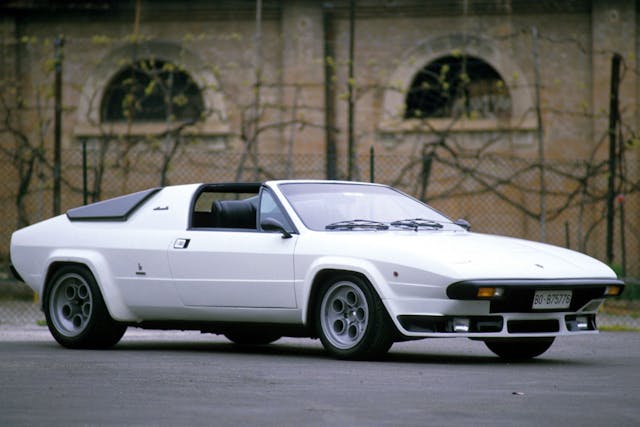
Essentially an updated 3.0-liter Urraco, the Silhouette was Lamborghini’s first production open car. Although it carried over the Urraco’s engine and bodyshell, this wasn’t immediately apparent, because the back end was redesigned with flying buttresses and an upright rear window (as featured on the 308 GTB/GTS). The detachable fiberglass roof panel could be stowed where the back seats had been. To distance the Silhouette from the Urraco, the wheel arches were squared off for a much more aggressive appearance. Beneath those moldings were bigger and wider Campagnolo wheels shod with the latest Pirelli P7 tires (195/50 up front and 285/40 at the back), and to top it all off there was a deeper front air dam that provided greater stability at high speeds.


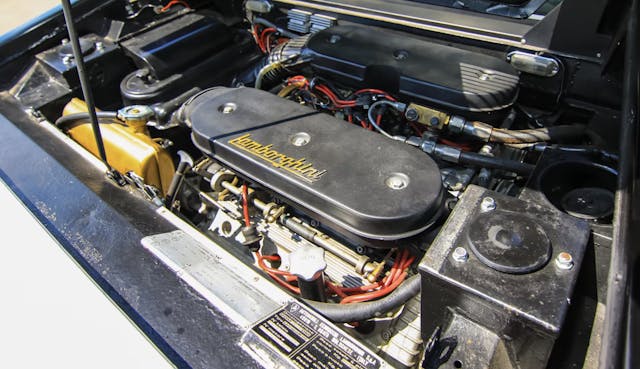
Most of the mainstream car magazines of the time gave the Silhouette no coverage. However, England’s CAR had been a fan of Lamborghini since its earliest days, and on no fewer than four occasions the mag published drive stories on this transitional model. First up was Ron Wakefield in summer 1976. He wrote: “This is the sort of car whose limits are so high you can’t get near them on a public road with the margin of safety I like to have, and to be thoroughly familiar with the Silhouette’s behavior I’d like to have an hour on a race track somewhere. I was told that the car had matched a Group 4 Pantera’s lap times in testing at Varano.”
The prototype that Wakefield drove was poorly made so he reserved judgment on the build quality; just a few months later, CAR’s Mel Nichols drove the first Silhouette to land in the UK. His more extensive review didn’t mention how well screwed together the Silhouette was, so presumably this early production car was finished to a rather higher standard than the prototype. But he ruminated plenty on the driving experience, which he thought was something special:
“The Silhouette feels very different compared with the Urraco. Not harder and sharper as you might expect, but softer and even more supple; tamer… I travelled fast in the Silhouette, and I travelled fast so very easily. The wheel is turned and the car answers. Impeccably, precisely, unquestionably. The responses do not seem significantly better than those of the already superb Urraco, but the grip of the Silhouette once the manoeuvre has been undertaken is unmistakably stronger. You are endowed with even greater facilities for cornering, with reserves so huge that I sit here now after thundering along motorways at upwards of 160 mph, after whipping up mountains and charging down them, with no idea of where the limits of the Silhouette really lie… The Urraco hasn’t been overshadowed; it has been complemented. Magnificently so.”
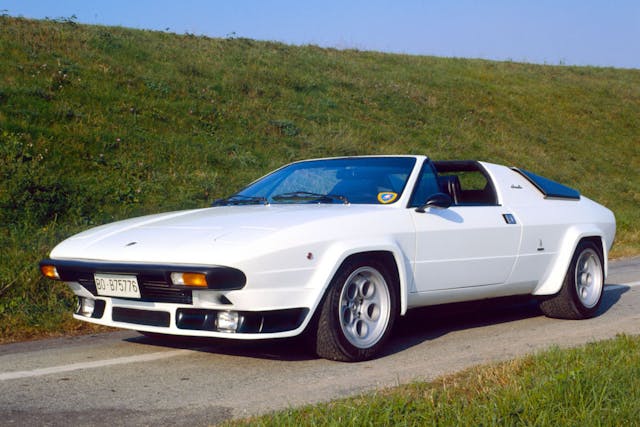
Less than a year later, Nichols was back at Sant’Agata, bringing the final Silhouette back to the UK, with Lamborghini teetering on the brink of bankruptcy. Production was running at little more than one car per week, and it didn’t help that North America, the world’s biggest car market, was out of bounds, because Lamborghini couldn’t supply enough cars to make the effort worthwhile for its importer, so it provided none at all. By June 1978, Lamborghini’s Type Approval paperwork for the UK had expired, which meant that its importer could no longer sell any cars there, either, even though there was demand for about 60 each year.
Thankfully, the company was saved in the early 1980s by brothers Jean-Claude and Patrick Mimran, but the rescue was a long, drawn-out process that took several years, and by that point the Silhouette’s time had been and gone. The final Silhouette was built in 1979 (the same year that the last Urraco was built), its production tally just 55 examples, the last one of which would become the Jalpa prototype. That car was launched in 1982, with a 3485-cc version of the V-8 engine first seen in the Urraco and carried over to the Silhouette. More than 400 would be made, in a run that lasted from 1982 until 1988, by which time the Silhouette had all but faded from collective memory.
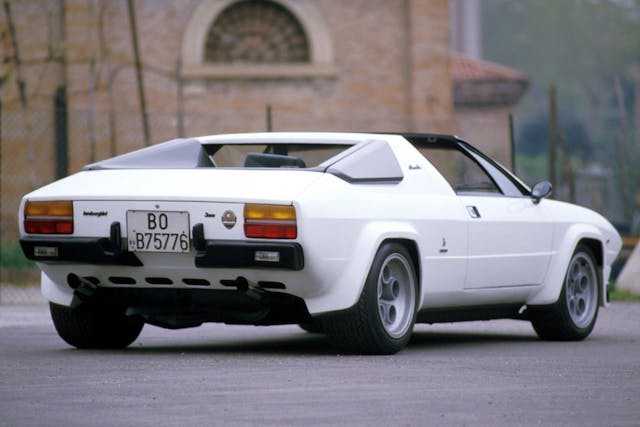
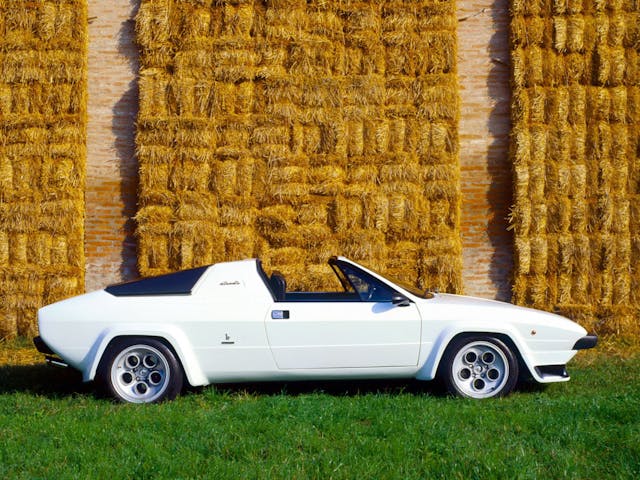


Most certainly an example of where Lamborghini was at in the 70s. The squared off wheel openings for example. Different but from an appearance standpoint what do you prefer? Bertones Urraco / Silhouette or Giurgiaros Bora / Merak.
Story title should have been “was always in the shadow”
There is definite Countach in the styling, especially the side profile. You can see the relationship between them.
I don’t suppose that the homely styling (compared to the Urraco) made any difference to potential buyers.
The Silhouette to my eye makes the Countach look like what a high school kid with a J C Whitney catalogue would throw onto it. And the Jalpa, also in my eye, from many angles just isn’t coherent (a kind of transformer-mobile before transformers). The profile photo and the 3/4 ones, front and rear, compliment the Silhouette’s design. A good starting place for a 21st C interpretation. I tip my hat to Signore Gandani. Il tuo lavoro continua a vivere.
Gandini. He deserves no typos.
KV – the very early Countachs weren’t all that bad, while not my brand of scotch. But then, just as you reference, the J C Whitney versions came a long. The junior high school kids notebook doodle design was embraced. It unfortunately ended up on cars like the Pantera too. Lambos car’s became more outlandish just be outlandish then after. The ‘look at me’ look that would never match the Miura in terms of pure clean design.